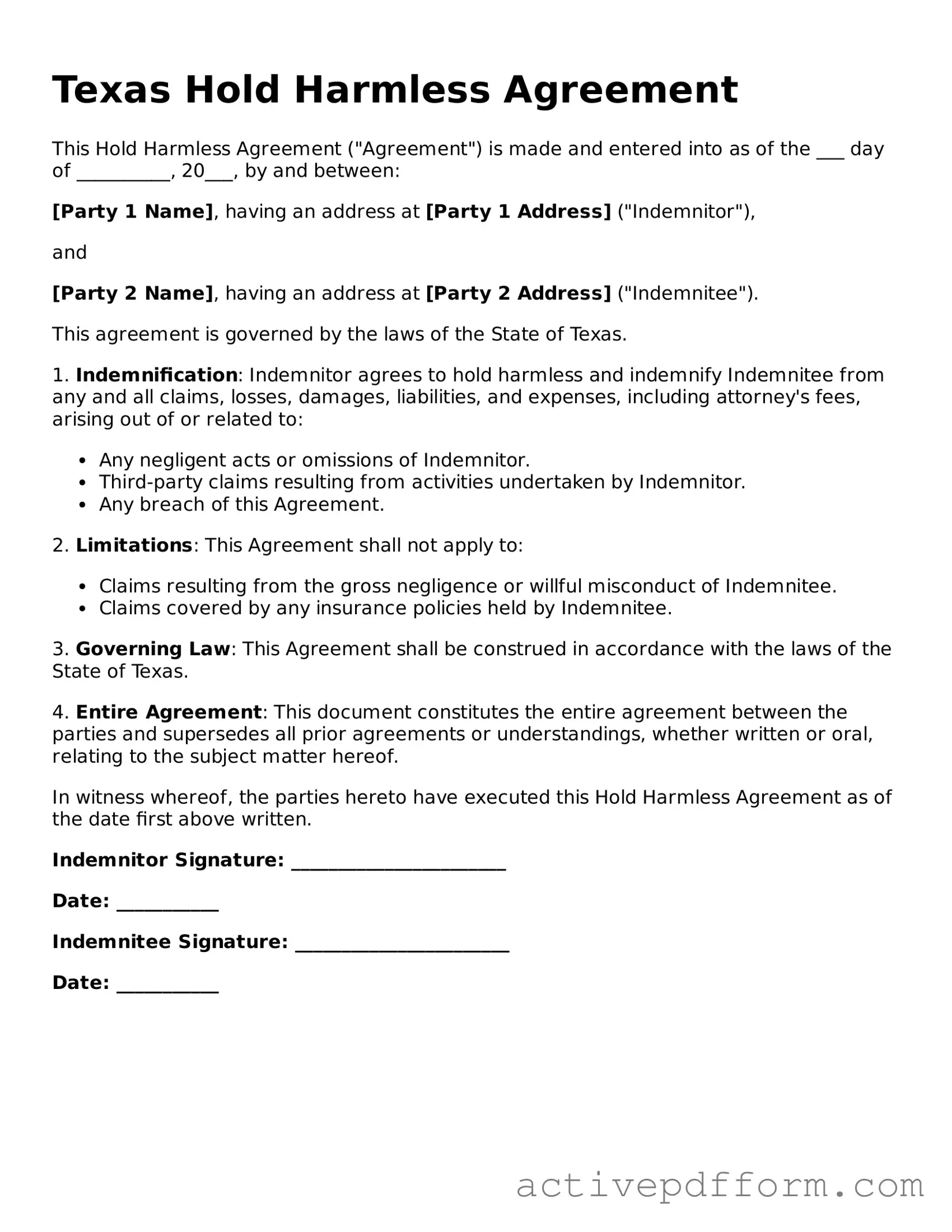What is a Texas Hold Harmless Agreement?
A Texas Hold Harmless Agreement is a legal document that protects one party from liability for certain risks or damages. Typically used in contracts, this agreement ensures that one party agrees not to hold the other responsible for any injuries or damages that may occur during the execution of a specific activity or project. It is commonly utilized in construction, real estate, and event planning scenarios.
Who should use a Hold Harmless Agreement?
This agreement is beneficial for individuals or businesses that engage in activities where there is a risk of injury or property damage. Contractors, property owners, event organizers, and service providers often use it to limit their liability. By signing this document, parties can clarify their responsibilities and protect themselves from potential lawsuits.
What are the key components of a Hold Harmless Agreement?
A typical Hold Harmless Agreement includes several essential elements. These often consist of the names of the parties involved, a clear description of the activities covered, the specific liabilities being waived, and the duration of the agreement. Additionally, it may outline any indemnification provisions, which require one party to compensate the other for losses incurred.
Is a Hold Harmless Agreement enforceable in Texas?
Yes, Hold Harmless Agreements are generally enforceable in Texas, provided they are drafted correctly and meet legal requirements. However, certain limitations exist. For instance, courts may not enforce agreements that attempt to waive liability for gross negligence or willful misconduct. It’s crucial to ensure that the agreement is clear and specific to avoid any potential disputes.
How do I create a Hold Harmless Agreement?
Creating a Hold Harmless Agreement involves several steps. First, identify the parties involved and the specific activities or risks to be covered. Next, draft the agreement, ensuring that it includes all necessary components. It’s advisable to consult with a legal professional to ensure compliance with Texas law and to address any specific concerns. Once drafted, all parties should review and sign the document.
Can a Hold Harmless Agreement be modified?
Yes, a Hold Harmless Agreement can be modified, but both parties must agree to the changes. It’s important to document any modifications in writing and have all parties sign the amended agreement. This ensures that everyone is on the same page and helps avoid misunderstandings in the future.
What should I do if someone breaches a Hold Harmless Agreement?
If a breach occurs, the first step is to review the agreement to understand the specific terms and obligations. Communication with the other party is essential; sometimes, issues can be resolved amicably. If necessary, legal action may be pursued to enforce the agreement or seek damages. Consulting with a lawyer can provide guidance on the best course of action based on the situation.
